Flocks of starlings form ever-changing, mesmerising aerial displays in autumn and winter.
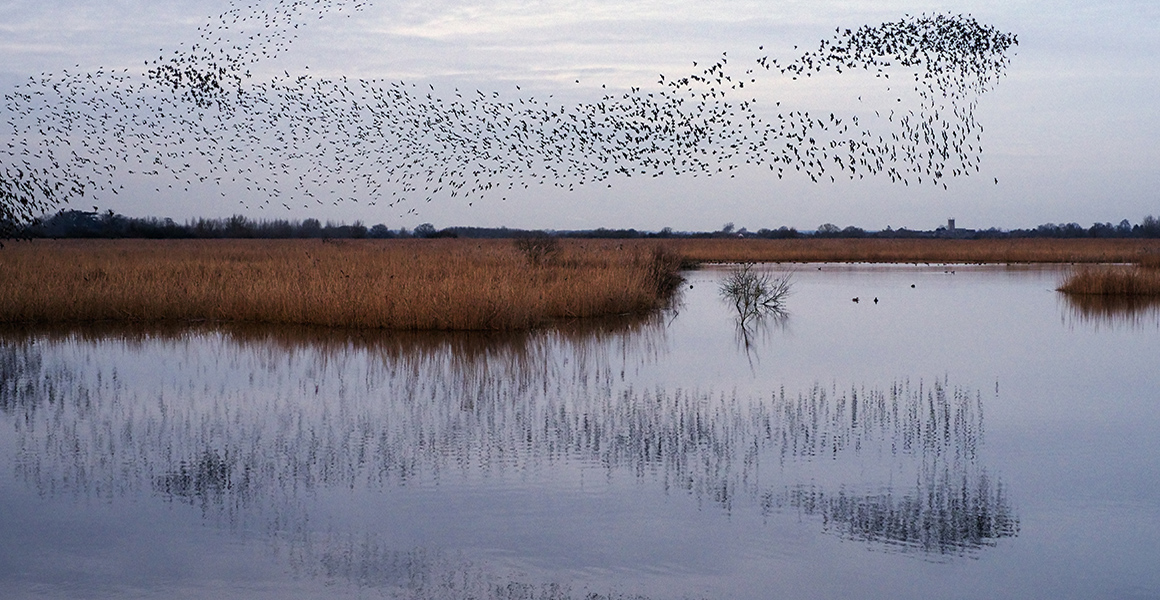
A starling murmuration forms extraordinary patterns. © MintImages/Shutterstock
The European or common starling, Sturnus vulgaris, is a familiar sight in our cities and towns. You might have seen one hopping around looking for food in the grass.
Starlings have black feathers with a purply-green sheen, sprinkled in winter with gleaming white flecks that look like stars in the night sky.
There are starlings that live in the UK all year round. In autumn, starlings from mainland Europe migrate across the channel to spend the winter in the UK. Together, they form massive flocks made up of thousands of birds.
At sunset, huge groups of starlings take to the sky, swooping and swirling into spheres, planes and waves. The phenomenon is called a murmuration, and it's named after the noise that is made by the many flapping wings of a group of starlings in flight.
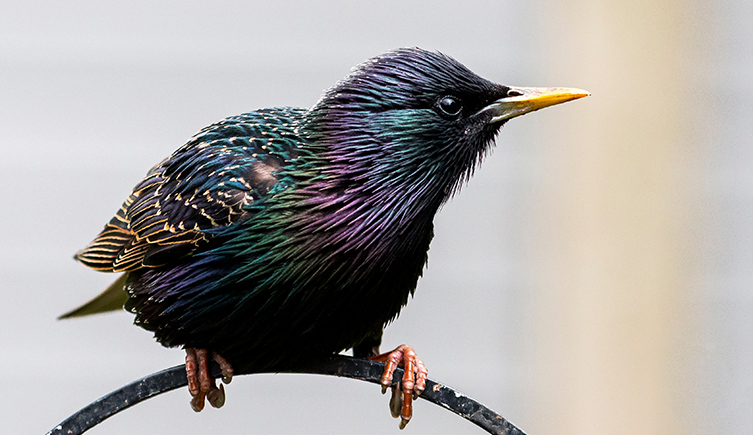
A European starling puffing its feathers in the winter sunshine. Male starlings have much stronger colours than female starlings. © Steve Midgley/Shutterstock
Starling migration facts at a glance
Thousands of starlings from colder European countries migrate to the UK every September and October looking for food and warmer weather.
These starlings leave the UK in February and March.
Safety in numbers
It's not clear why starlings make a murmuration, but researchers recently found that it's most likely to keep them safe from predators.
Using people power, a group of researchers gathered information about 3,000 murmurations. Over the winter of 2015-2016, they asked anyone watching a murmuration to record its size, how long it lasted, the habitat it was in, the air temperature and if predators were present.
In the collected data, they found birds of prey were present at 29.2% of the murmurations, including harriers, Circus species, peregrines, Falco peregrinus, and sparrowhawks, Accipiter nisus. They also found that murmurations tended to be bigger when sparrowhawks were flying nearby.
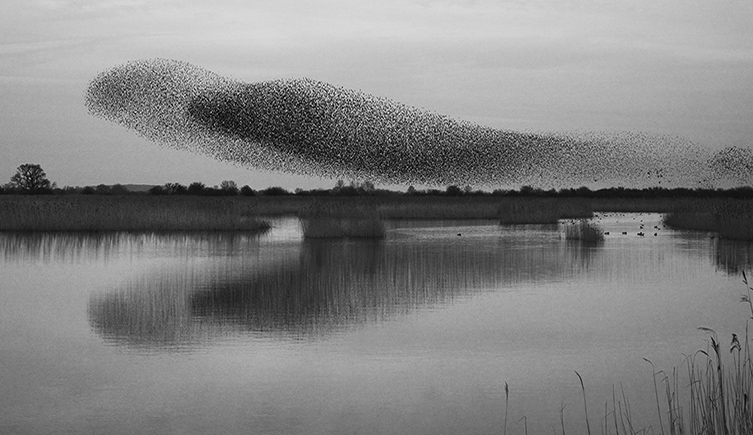
A starling murmuration flies over a wintery wetland. © MintImages/Shutterstock
How does a starling murmuration work?
Starlings form the incredible patterns seen in a murmuration by following simple rules of movement in relation to each other.
When in flight, each starling matches their movements to the birds surrounding it. If one starling changes its flight direction or speed, the birds around it also change their flight direction or speed. This change spreads throughout the group and creates the patterns of the murmuration.
Models suggest that a starling flies at around 45 kilometres per hour and small variations in speed and direction create a murmuration.
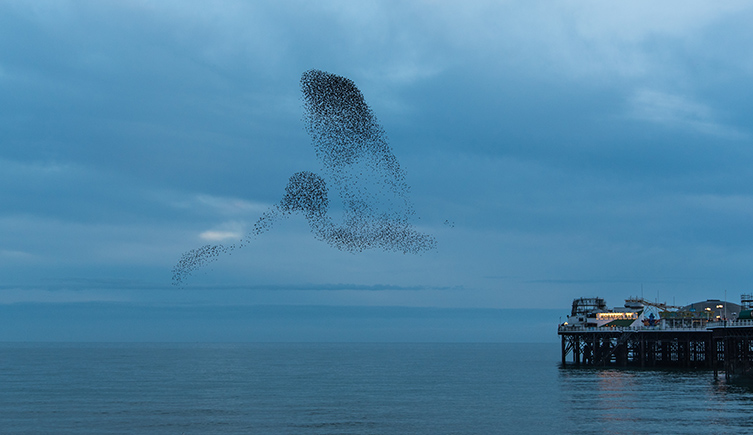
Starlings murmurate over the sea at Brighton. © Sarah Bray/Shutterstock
Where can I see a murmuration of starlings?
You can see these sunset starling displays in many places across the UK. The website Starlings in the UK have a murmuration map that shows where starling roosting sites are located.
Roosting sites where you might see a murmuration include Blackpool's North Pier, Aberystwyth Royal Pier, Brighton Pier, Dorset's Shell Bay, Somerset's Shapwick Heath, Swaffham and Cumbria.
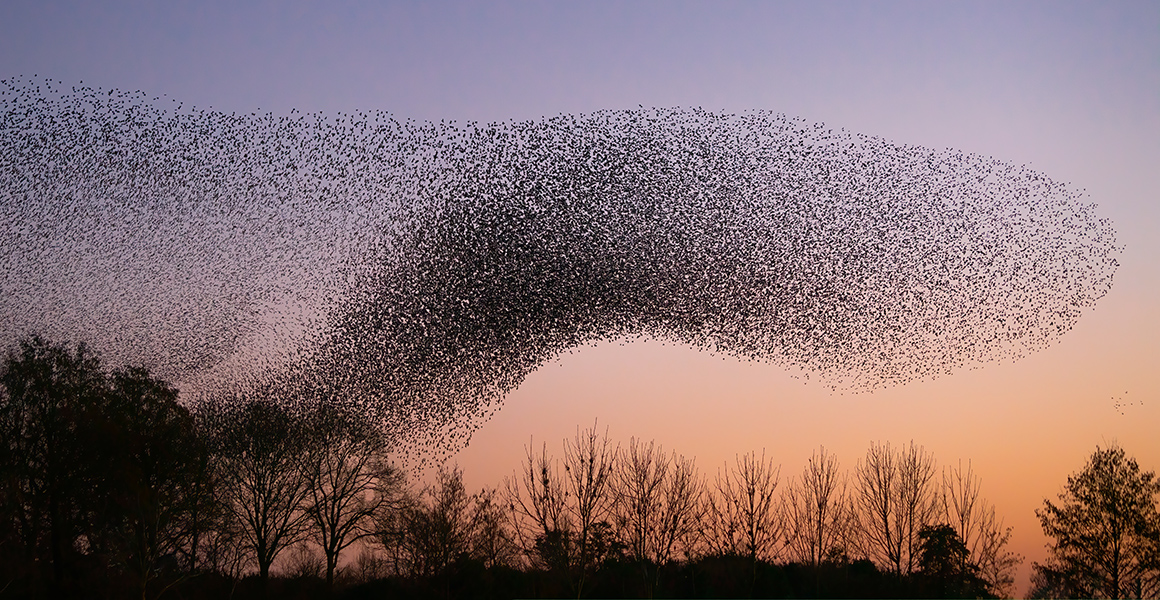
Sunset is the best time to see a mumuration. © Albert Beukhof/Shutterstock
Starling numbers are in decline
The common European starling was recently placed on the red list as a bird of high conservation concern. In the UK, staring numbers have dropped by 67% since the early 1970s.
The decline in starlings is probably linked to a change in food availability. Starlings eat most things, including insect larvae, such as leatherjackets - the larvae of daddy long legs. These larvae live in the soil under lawns and grassy areas, so the more grass there is, the more food there'll be for the starlings.
In addition to this, starlings also eat grain, fruits, seed mixes and worms. Changes in farming practices, such as moving livestock feed indoors, has reduced their access to food and is possibly influencing their numbers.
Starlings help each other out when times are hard
Researchers recently observed a fledged European starling help its parents feed the next generation of chicks. This behaviour has been observed in other species of starling, but this is a rare example of cooperative behaviour in the European starling. Researchers think this behaviour might be a reaction to the pressures of climate change.

British wildlife
Find out about the plants and animals that make the UK home.
Don't miss a thing
Receive email updates about our news, science, exhibitions, events, products, services and fundraising activities. We may occasionally include third-party content from our corporate partners and other museums. We will not share your personal details with these third parties. You must be over the age of 13. Privacy notice.
Follow us on social media